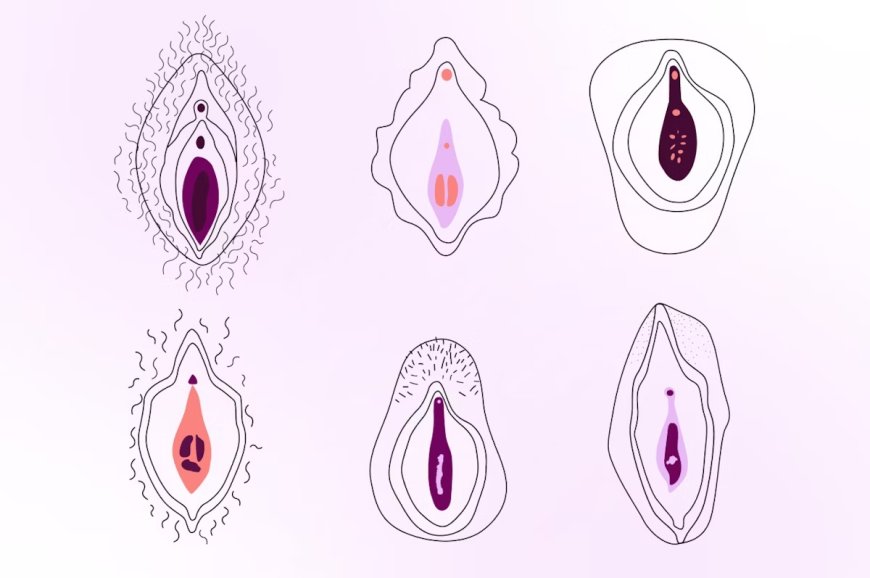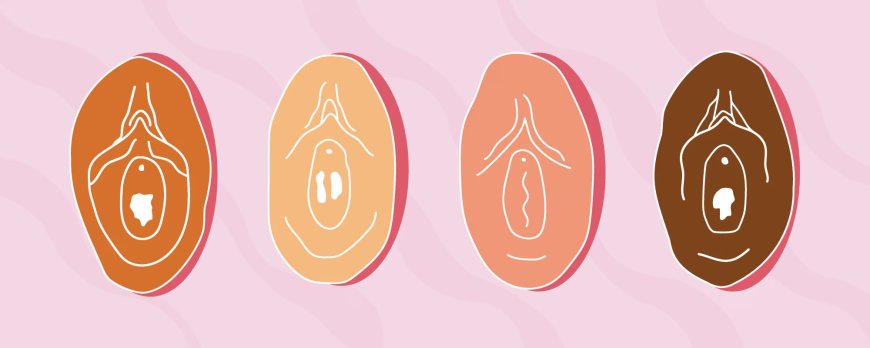Breaking Down Virginity Myths: The Truth About First Sexual Experiences
Debunk common myths about virginity and first sexual experiences. Learn the medical and psychological facts about what really happens during first-time sex.

Post: Breaking Down Virginity Myths: The Truth About First Sexual Experiences
The concept of virginity remains one of the most misunderstood aspects of human sexuality, surrounded by myths that can create anxiety, shame, and unrealistic expectations for those approaching their first sexual experiences. These misconceptions, deeply rooted in cultural traditions and perpetuated through media and peer conversations, often bear little resemblance to medical reality or the diverse experiences of actual individuals. Understanding the truth about first sexual experiences requires examining both the biological facts and the psychological realities while dismantling harmful myths that can negatively impact sexual health and wellbeing.
The Myth of Virginity as a Physical State
Perhaps the most pervasive myth about virginity involves the belief that it represents a definable physical condition that can be medically determined or "lost" through specific actions. This misconception centers primarily on the hymen and its supposed role as an indicator of sexual experience.
The hymen is a thin, elastic membrane that partially surrounds the vaginal opening in people assigned female at birth. Contrary to popular belief, the hymen does not completely seal the vaginal opening in most individuals—if it did, menstruation would be impossible. The hymen varies significantly in thickness, shape, and coverage among individuals, with some people born with very little hymenal tissue and others having more substantial coverage.
Medical research has definitively established that hymenal appearance cannot reliably indicate whether someone has had sexual intercourse. The hymen can be stretched or torn through numerous activities including exercise, tampon use, medical examinations, or normal physical activity. Additionally, the hymen is elastic and can stretch during sexual activity without tearing, meaning that first intercourse may not cause any physical changes to hymenal tissue.
The World Health Organization has condemned "virginity testing" as a harmful practice with no scientific validity. These examinations cannot determine sexual history and can cause psychological trauma while perpetuating harmful myths about women's sexuality and worth.
The "Popping the Cherry" Myth and Pain Expectations
The phrase "popping the cherry" reflects another dangerous myth that first sexual intercourse necessarily involves breaking something inside the body, inevitably causing pain and bleeding. This misconception creates unnecessary anxiety and can contribute to physical tension that actually makes first sexual experiences more uncomfortable.
While some individuals may experience discomfort or minor bleeding during first intercourse, this is not universal or inevitable. Pain during first sexual experiences often results from factors such as insufficient lubrication, anxiety and muscle tension, rushed or inadequate foreplay, or lack of communication between partners rather than from "breaking" any anatomical structure.
Many factors influence comfort during first sexual experiences, including relaxation, adequate lubrication (natural or artificial), gradual progression, communication between partners, and emotional comfort with the situation. When these factors are present, first sexual experiences can be comfortable and pleasurable rather than painful.
The expectation of pain can create a self-fulfilling prophecy where anxiety causes muscle tension that makes penetration more difficult and uncomfortable. Understanding that comfort is possible and normal can help individuals approach first sexual experiences with more positive expectations.
Gender Double Standards and Virginity
Cultural attitudes toward virginity often reveal significant gender double standards that affect how first sexual experiences are perceived and valued. These disparities reflect broader cultural attitudes toward gender, sexuality, and social worth.
Female virginity has historically been treated as valuable commodity in many cultures, with women's worth often tied to their perceived sexual purity. This approach treats women's sexuality as something that can be "lost" or "given away," creating shame around natural sexual development and exploration.
Conversely, male virginity is often viewed as something to be discarded quickly, with social pressure for men to gain sexual experience as proof of masculinity. This creates different but equally harmful pressures that can lead to rushed or unsatisfying first sexual experiences.
These double standards ignore the reality that sexual experience is a normal part of human development for all genders, and that individuals of all genders deserve to approach sexuality at their own pace without shame or pressure.
The Myth of Instant Sexual Competence
Popular culture often portrays first sexual experiences as naturally smooth and satisfying, creating unrealistic expectations about sexual competence and performance. This myth can lead to disappointment and anxiety when real experiences don't match idealized portrayals.
Sexual satisfaction and competence develop over time through experience, communication, and learning about one's own and partner's preferences. First sexual experiences are often awkward, brief, or less satisfying than later encounters as individuals learn about their bodies and develop sexual skills.
This learning process is normal and expected rather than representing failure or inadequacy. Sexual competence involves not just physical techniques but also communication skills, emotional intimacy, and understanding of consent and boundaries.
Timing and Readiness Myths
Myths about appropriate timing for first sexual experiences create unnecessary pressure and comparison among young people, leading to decisions based on external expectations rather than personal readiness.
The belief that "everyone else" is having sex creates pressure to become sexually active before feeling emotionally or physically ready. Statistics show significant variation in timing of first sexual experiences, with many individuals not becoming sexually active until their late teens or early twenties.
Sexual readiness involves multiple factors including emotional maturity, access to information and resources, ability to communicate about sexuality, understanding of consent and boundaries, and access to contraception and sexual health resources. These factors are more important than age alone in determining appropriate timing for sexual activity.
Performance Anxiety and Expectations
Myths about sexual performance create anxiety that can negatively impact first sexual experiences and establish patterns of sexual anxiety that persist into later relationships.
The expectation that first sexual intercourse should result in orgasm for both partners creates pressure that often prevents relaxation and enjoyment necessary for sexual satisfaction. Many individuals, particularly those with vaginas, may not experience orgasm during early sexual encounters as they learn about their bodies and sexual responses.
Sexual performance involves much more than achieving orgasm, including communication, intimacy, pleasure, and emotional connection. Focusing on these broader aspects of sexuality can create more positive and satisfying experiences than focusing narrowly on specific physical outcomes.

The Myth of Heterosexual Penetrative Sex as "Real" Sex
Cultural definitions of virginity often center exclusively on penile-vaginal penetration, creating harmful hierarchies that devalue other forms of sexual expression and exclude LGBTQ+ experiences.
This narrow definition ignores the reality that people experience many forms of sexual intimacy that can be equally meaningful and significant. Oral sex, manual stimulation, and other forms of sexual contact can be profound first sexual experiences that don't fit traditional virginity definitions.
For LGBTQ+ individuals, traditional virginity concepts may not apply to their sexual experiences at all, creating confusion and exclusion from cultural conversations about sexual development.
A more inclusive understanding of sexual experience recognizes that intimacy and sexual connection take many forms, all of which can be significant and meaningful in individual sexual development.
Emotional and Psychological Realities
First sexual experiences involve complex emotional and psychological dimensions that are often overlooked in discussions focused on physical aspects of sexuality.
Many people experience a range of emotions around first sexual experiences, including excitement, anxiety, curiosity, disappointment, or ambivalence. These varied emotional responses are normal and don't indicate success or failure in sexual experience.
The significance of first sexual experiences varies greatly among individuals. Some people find them profoundly meaningful while others view them as relatively minor milestones. Both perspectives are valid and normal.
Building emotional intelligence around sexuality involves understanding and accepting these varied responses while developing skills for communication, boundary setting, and emotional processing that support healthy sexual development.
Consent and Communication Realities
Myths about virginity often obscure the importance of consent and communication in sexual experiences, focusing on physical outcomes rather than the interpersonal skills necessary for positive sexual interactions.
Healthy first sexual experiences require ongoing communication about desires, boundaries, comfort levels, and consent. This communication continues throughout sexual encounters rather than being a one-time conversation.
Understanding enthusiastic consent means recognizing that agreement to sexual activity should be freely given, informed, and revocable at any time. This understanding is crucial for positive sexual experiences regardless of experience level.
Health and Safety Considerations
Focusing on virginity myths can distract from practical health and safety considerations that are crucial for positive first sexual experiences.
Access to accurate sexual health information, contraception, and sexually transmitted infection prevention is essential for safe sexual experiences. This information should be available before individuals become sexually active rather than learned through experience.
Understanding normal anatomy and sexual response helps individuals recognize what is normal versus what might require medical attention. This knowledge reduces anxiety while promoting sexual health and wellbeing.

Moving Beyond Virginity Concepts
Many sexual health educators and researchers advocate for moving beyond virginity concepts entirely, focusing instead on sexual development, health, and wellbeing throughout life.
This approach emphasizes that sexuality exists on a continuum of experiences and development rather than being defined by single moments or acts. Sexual development involves ongoing learning, growth, and exploration that continues throughout life.
Focusing on sexual wellbeing rather than virginity status supports individuals in developing healthy attitudes toward sexuality, relationships, and their own bodies while reducing shame and anxiety around sexual experience.
Cultural and Religious Considerations
While challenging harmful myths, it's important to acknowledge that virginity concepts hold cultural and religious significance for many individuals and communities. The goal is not to dismiss these meanings but to separate cultural or spiritual significance from medical misinformation.
Individuals can honor their cultural or religious values around sexuality while also having accurate information about anatomy, health, and sexual development. These perspectives can coexist when based on informed choice rather than misinformation.
Supporting Positive First Experiences
Creating conditions for positive first sexual experiences involves providing accurate information, supporting emotional development, and promoting communication skills rather than focusing on physical outcomes or timeline expectations.
Comprehensive sexual education that includes information about anatomy, consent, communication, pleasure, and sexual health helps individuals prepare for sexual experiences with realistic expectations and practical knowledge.
Access to supportive adults, healthcare providers, and resources enables individuals to ask questions, address concerns, and access necessary health services without shame or judgment.
Conclusion: Embracing Sexual Wellbeing
Moving beyond virginity myths toward understanding sexual wellbeing requires recognizing sexuality as a natural aspect of human development that unfolds differently for each individual. By replacing myths with facts, supporting open communication, and promoting sexual health rather than focusing on arbitrary milestones, we can help individuals develop healthy, positive relationships with their sexuality throughout their lives.
The truth about first sexual experiences is that they are as diverse as the individuals who have them, influenced by factors including emotional readiness, communication skills, health knowledge, and personal values rather than by myths about physical changes or cultural expectations. Understanding this truth supports sexual wellbeing and helps individuals approach sexuality with confidence, knowledge, and self-respect.











